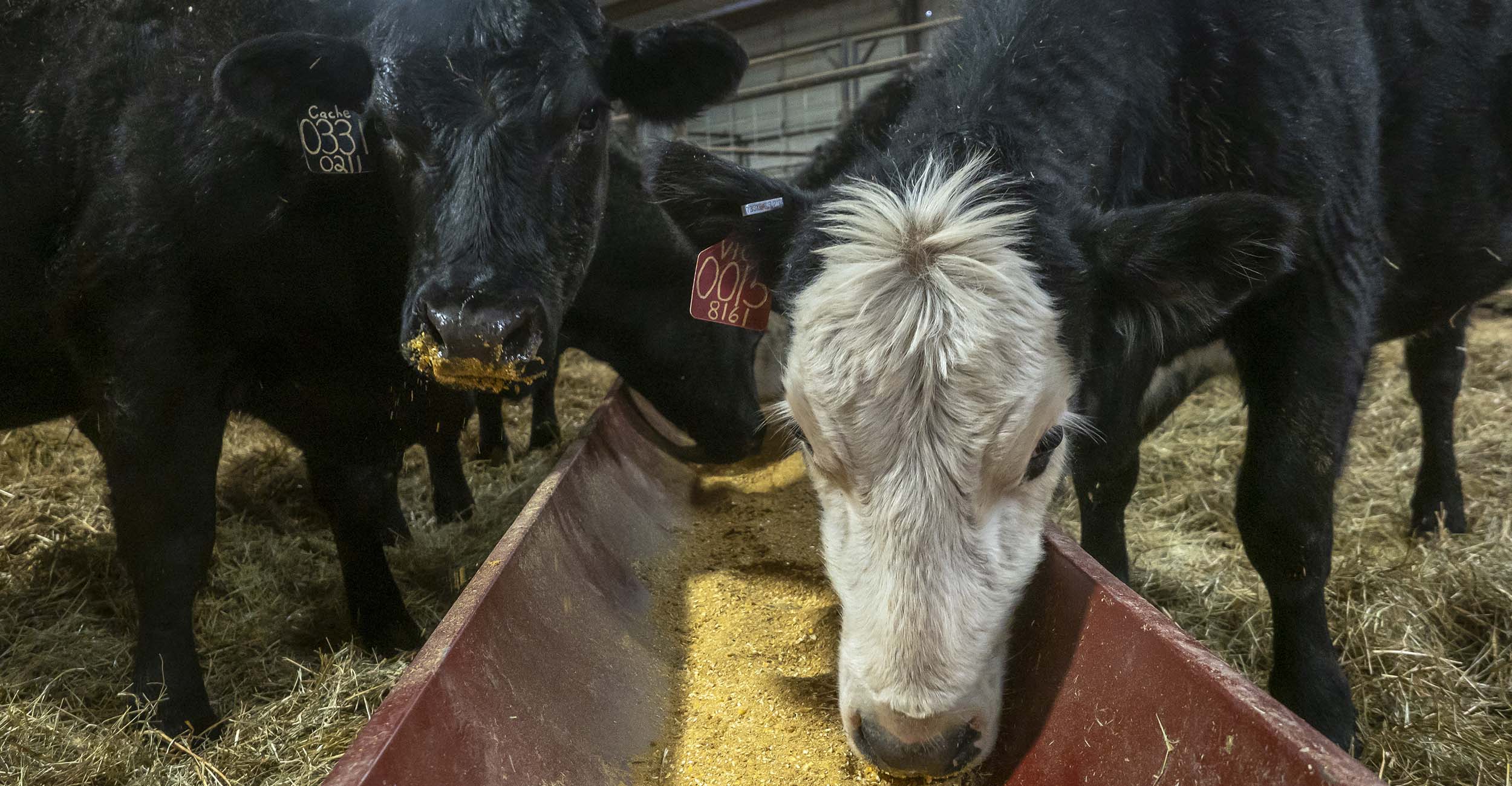
Creative feed strategies for wintering cows are helpful but costly
Wednesday, December 7, 2022
Media Contact: Gail Ellis | Editorial Communications Coordinator | 405-744-9152 | gail.ellis@okstate.edu
With hay in short supply, producers are trying to avoid cattle herd liquidation this winter by feeding their cattle alternative feedstuffs.
Paul Beck, Oklahoma State University Extension specialist in beef nutrition, said there are several ways concentrate feed can be used to meet a cow’s nutrient requirements. Although these other feed resources are available, all feed costs are high and will require additional labor and management for a winter feeding program.
Producers can incorporate the following strategies with concentrate feed:
- Limit feeding hay by unrolling or distributing hay in measured amounts to meet daily needs, then providing concentrate feed to supplement for deficient nutrients.
- Provide a total mixed ration of hay and concentrate mixed at an amount that only supports the required nutrients.
- Provide free-choice hay and feed a lower-energy supplement in an amount that will reduce hay intake.
Beck said in all scenarios, it is best to feed cows their supplement and hay at the same time each day. Reducing hay amounts and limiting the time cattle have access to hay will result in very low hay waste, as well as daily feeding processed hay in a total mixed ration. Feeding free-choice hay with high supplement levels will result in high levels of hay waste and sorting.
“Concentrate feeding levels required to reduce hay intake will need to be over 0.7 to 1% of body weight of dry matter or more, so a 1,200-pound cow will need to be fed up to 13 to 14 pounds of feed a day,” Beck said. “This can be fairly low in energy to meet the cow’s requirements.”
The OSU Extension Rancher’s Thursday Lunchtime Series this month on feeding cows through the winter addresses supplementation with concentrate feed and other challenges related to hay shortages. Learn more about limiting hay access with supplements in this recent session from Harold Stephens, county Extension director and agriculture educator in Atoka County.
Producers can also request assistance from OSU Extension educators in evaluating their current feeding practices through a feeder calibration clinic, featured on OSU Extension’s agriculture television show, SUNUP. For more information, contact Dana Zook, OSU Extension west district area livestock specialist, at 580-237-7677 or dana.zook@okstate.edu.
